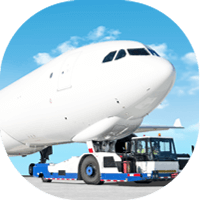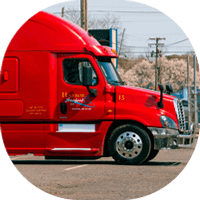Antwerp Port
The Port of Antwerp is a seaport in the province of Antwerp, Belgium. It is located on the right bank of the Scheldt river, close to its confluence with the Rhine.
The major towns near the Antwerp Port are Molenbeek-Saint-Jean, Anderlecht, Saint-Gilles, and Saint-Josse-ten-Noode. With a depth of up to 21.5 meters (70 ft), the port of Antwerp is one of the largest and busiest ports in Europe.
The Port of Antwerp is also connected to the hinterland by rail, road, and ship. The port of Antwerp consists of four distinct but interconnected areas: The Left Bank (Linkeroever), the Right Bank (Rechteroever), the Port of Antwerp (De Haven van Antwerpen), and the Waasland Port (Haven van het Waasland).
The Left Bank is the oldest part of the port and is located on the left bank of the Scheldt river. It is here that the port’s history began, with the construction of the first quays in the 16th century. The Left Bank is still the heart of the port, with the majority of the port’s facilities and infrastructure located here.
The Right Bank is a relatively new part of the port, developed in the 20th century. It is located on the right bank of the Scheldt river and is home to the port’s container terminal. The port is accessible to vessels of up to 50,000 DWT.
The Antwerp Port is one of the busiest seaports in the world. The port is also an important hub for container shipping. The Antwerp Port is also an important center for the petrochemical industry. It has a large number of oil refineries and petrochemical plants. In 2013, the port handled 36,249,835 tons of crude oil.
The requirements for exporting through the Port of Antwerp are as follows:
- All shipments must be accompanied by a commercial invoice.
- For shipments valued over $2,500, a Certificate of Origin is required.
- Hazardous materials must be appropriately labeled and packaged by international regulations.
- A packing list must be provided for all shipments.
- A health certificate must accompany shipments of live animals.
- For perishable shipments, a Shipper’s Letter of Instruction is required.
- All shipments must be adequately insured.
- All documentation must be presented in English.
The requirements for importing through the Port of Antwerp are as follows:
- All shipments must be accompanied by a commercial invoice.
- For shipments valued over $2,500, a Certificate of Origin is required.
- Hazardous materials must be appropriately labeled and packaged by international regulations.
- A packing list must be provided for all shipments.
- All shipments must be adequately insured.
- All documentation must be presented in English.
![]() AddressHavenhuis Entrepotkaai 1 Antwerp B-2000 Belgium
AddressHavenhuis Entrepotkaai 1 Antwerp B-2000 Belgium
![]() Port AuthorityAntwerp Port Authority
Port AuthorityAntwerp Port Authority
![]() Phone+32-3-205 20 11
Phone+32-3-205 20 11
![]() Fax+32-3-205 20 28
Fax+32-3-205 20 28
![]() Email[email protected]
Email[email protected]
![]() Coordinates51º 12′ 8” N, 4º 22′ 58” E
Coordinates51º 12′ 8” N, 4º 22′ 58” E
![]() Decimal51.2023663, 4.3828961
Decimal51.2023663, 4.3828961
![]() UN/LOCODEBEANR
UN/LOCODEBEANR
![]() Port TypeSeaport
Port TypeSeaport
![]() Port SizeVery Large
Port SizeVery Large
![]() Websitewww.portofantwerp.be
Websitewww.portofantwerp.be
![]() TerminalYes
TerminalYes
Inland port
Mean tide4 feet
Tide
Overhead Limit
Swell
Channel36 – 40 feet 11 – 12.2 meters
Cargo Pier36 – 40 feet 11 – 12.2 meters
Mean Tide
Anchorage
Oil Terminal41 – 45 feet 12.5 – 13.7 meters
Harbor SizeLarge
ShelterGood
Max Vessel SizeOver 500 feet in length
Harbor TypeRiver Tide Gate
Turning Area
Compulsory
Available
Advisable
Local Assist
Provisions
Fuel Oil
Deck
Water
Diesel Oil
Engine
0-24 Ton Lifts
25-49 Ton Lifts
50-100 Ton Lifts
100+ Ton Lifts
Fixed Cranes
Mobile Cranes
Floating Cranes
Wharves
Med Moor
Ice
Anchor
Beach
Assist
Salvage
Pratique
Deratt Cert
Longshore
Electrical Repair
Steam
Electrical
Navigation Eq
Ship Repairs
Marine Railroad
Drydock Size
Garbage Disposal
Dirty Ballast
Telephone
Radio
Air
Telegraph
Radio Tel
Rail


